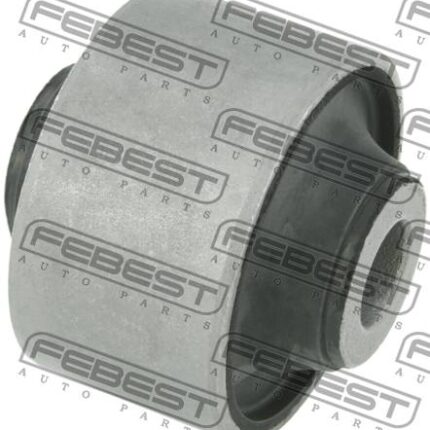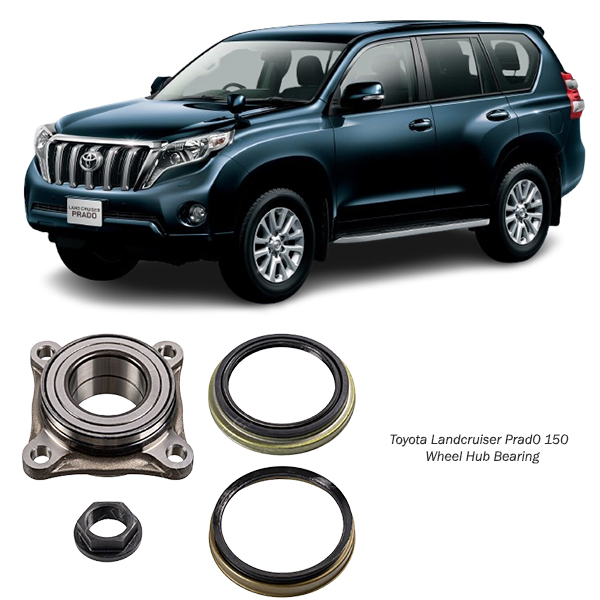-12%
Get Toyota Land Cruiser Prado 150 Series Front Wheel Hub Bearing 43560-60010 in Kenya
The front wheel hub bearing is a critical component of a vehicle’s wheel assembly. It serves the dual purpose of facilitating smooth wheel rotation and supporting the vehicle’s weight. Despite its compact size, it plays an essential role in ensuring stability, performance, and safety. This guide explores the construction, functions, benefits, maintenance, common issues, and replacement considerations associated with front wheel hub bearings.
What is a Front Wheel Hub Bearing?
A wheel hub bearing is a pre-assembled unit that combines a bearing with the hub. It is designed to allow the wheel to rotate with minimal friction while securely attaching it to the axle. The “front” designation indicates its placement on the front wheels of the vehicle.
Hub bearings are integral to the suspension system and work in tandem with components such as the brake disc, wheel studs, and ABS sensor (if equipped).
Key Functions of Front Wheel Hub Bearings
- Facilitating Wheel Rotation:
- The bearing enables smooth and efficient wheel rotation by reducing friction between the wheel and axle.
- Supporting the Vehicle’s Weight:
- The bearing bears the weight of the vehicle while distributing it evenly across the wheel assembly.
- Maintaining Stability:
- It ensures precise alignment of the wheel, contributing to steering accuracy and vehicle stability.
- Housing ABS Sensors:
- In modern vehicles, the hub assembly often integrates sensors for the anti-lock braking system (ABS), ensuring optimal braking performance.
- Reducing Vibrations:
- The hub bearing dampens vibrations generated during wheel rotation, enhancing ride comfort.
Construction of Front Wheel Hub Bearings
Front wheel hub bearings are typically enclosed in a sealed unit. This design minimizes maintenance and increases durability. The primary components include:
- Inner and Outer Races:
- Steel rings that house the rolling elements and provide a surface for smooth rotation.
- Rolling Elements:
- These can be ball bearings (for light-duty applications) or tapered rollers (for heavier loads).
- Cage:
- Holds the rolling elements in place and ensures uniform spacing.
- Hub:
- Connects the wheel to the axle and provides mounting points for the wheel studs and brake disc.
- Seals:
- Prevent contaminants like dirt and moisture from entering the bearing assembly.
- ABS Sensor (Optional):
- Embedded in modern hub assemblies for advanced braking systems.
Benefits of a Properly Functioning Front Wheel Hub Bearing
- Enhanced Driving Comfort:
- Smooth wheel rotation reduces vibrations, noise, and harshness, ensuring a comfortable ride.
- Improved Safety:
- Reliable bearings contribute to consistent handling, braking, and stability.
- Longevity of Other Components:
- Properly functioning hub bearings reduce stress on adjacent parts, including suspension and brake systems.
- Fuel Efficiency:
- By minimizing friction, the bearing aids in reducing fuel consumption.
- Optimized ABS Performance:
- Integrated ABS sensors ensure precise data transmission for improved braking control.
Signs of a Failing Front Wheel Hub Bearing
A worn or damaged hub bearing can compromise safety and performance. Common symptoms include:
- Unusual Noises:
- Growling, humming, or grinding sounds from the front wheels, especially during turns.
- Steering Wheel Vibration:
- Excessive play or vibrations in the steering wheel, particularly at higher speeds.
- Uneven Tire Wear:
- Misalignment caused by a faulty bearing results in abnormal tire wear patterns.
- ABS Warning Light:
- A malfunctioning ABS sensor within the hub assembly may trigger the warning light.
- Wheel Play:
- Excessive lateral movement of the wheel when manually rocked indicates a worn bearing.
- Poor Handling:
- Reduced stability and responsiveness during steering or braking.
Common Causes of Wheel Hub Bearing Failure
- Contamination:
- Dirt, water, or road debris entering the bearing assembly can cause wear and corrosion.
- Excessive Loads:
- Overloading the vehicle or frequent driving on rough terrain accelerates wear.
- Improper Installation:
- Incorrect torque or misalignment during installation can damage the bearing.
- Wear and Tear:
- Over time, repeated use causes fatigue in the bearing materials.
- Impact Damage:
- Hitting potholes, curbs, or other obstacles can compromise the bearing’s integrity.
Maintaining Front Wheel Hub Bearings
- Regular Inspections:
- Inspect the bearings during routine maintenance for signs of wear or damage.
- Driving Habits:
- Avoid aggressive driving, such as sharp turns or high-speed impacts with road obstacles.
- Keep Seals Intact:
- Ensure the protective seals are undamaged to prevent contamination.
- Use Quality Replacement Parts:
- Opt for OEM or high-quality aftermarket hub bearings to ensure reliability.
- Proper Installation:
- Follow manufacturer guidelines for torque specifications during replacement.
Replacing a Front Wheel Hub Bearing
Replacing a front wheel hub bearing requires technical expertise and the right tools. Here is an overview of the replacement process:
Tools Required:
- Jack and jack stands
- Lug wrench
- Torque wrench
- Socket set
- Bearing press or puller
- Penetrating oil
Replacement Steps:
- Prepare the Vehicle:
- Park on a level surface and secure the vehicle with the parking brake.
- Raise the front wheel and support the vehicle with jack stands.
- Remove the Wheel:
- Loosen and remove the lug nuts, then take off the wheel.
- Disassemble the Brake System:
- Remove the brake caliper and rotor to access the hub assembly.
- Detach the Hub Assembly:
- Unscrew the bolts securing the hub to the steering knuckle.
- Disconnect any ABS sensor connections.
- Press Out the Old Bearing:
- Use a bearing press to remove the worn bearing from the hub assembly.
- Install the New Bearing:
- Press the new bearing into the hub assembly, ensuring it is seated correctly.
- Reassemble the Components:
- Reattach the hub, brake system, and wheel in reverse order.
- Torque all bolts to manufacturer specifications.
- Test Drive:
- Check for smooth operation and absence of noise during a short test drive.
Consequences of Neglecting Bearing Replacement
- Safety Hazards:
- A failing bearing can cause wheel detachment or braking issues, increasing the risk of accidents.
- Tire and Suspension Damage:
- Continued use of a faulty bearing accelerates wear on tires and suspension parts.
- Higher Repair Costs:
- Delaying replacement may damage adjacent components, leading to more expensive repairs.
- Reduced Performance:
- Impaired handling, stability, and braking compromise overall vehicle performance.
Advanced Features in Modern Wheel Hub Bearings
- Integrated ABS Sensors:
- Provide real-time data for precise braking control.
- Pre-Sealed Units:
- Require no lubrication or maintenance, offering enhanced durability.
- Lightweight Materials:
- Use of high-strength alloys reduces weight without compromising strength.
- Enhanced Corrosion Resistance:
- Protective coatings prevent rust and extend service life.
Conclusion
The front wheel hub bearing is a cornerstone of your vehicle’s safety and performance. Proper maintenance, timely inspection, and high-quality replacement are vital for ensuring optimal functionality. Understanding its functions and addressing issues promptly not only prolongs the life of the bearing but also enhances the overall driving experience. Investing in a reliable hub bearing is an investment in the safety, comfort, and longevity of your vehicle.
Follow us on Facebook for more parts.



